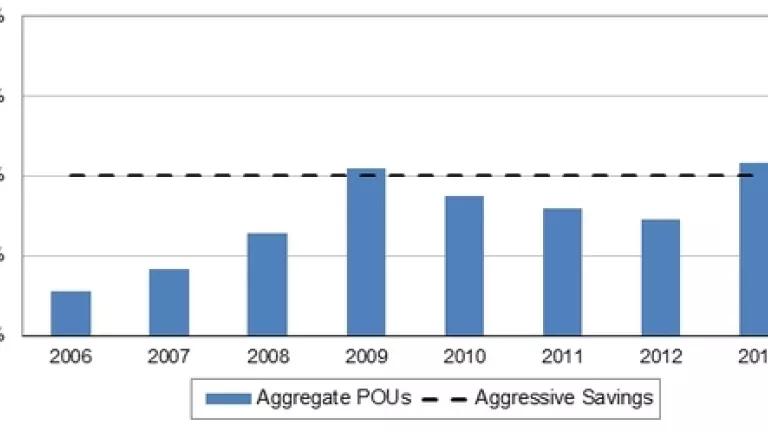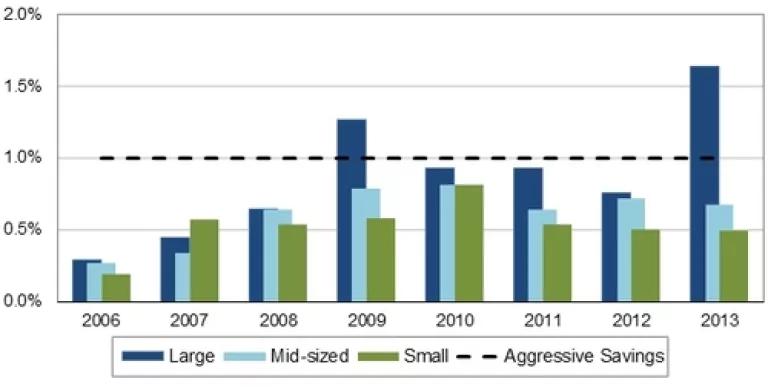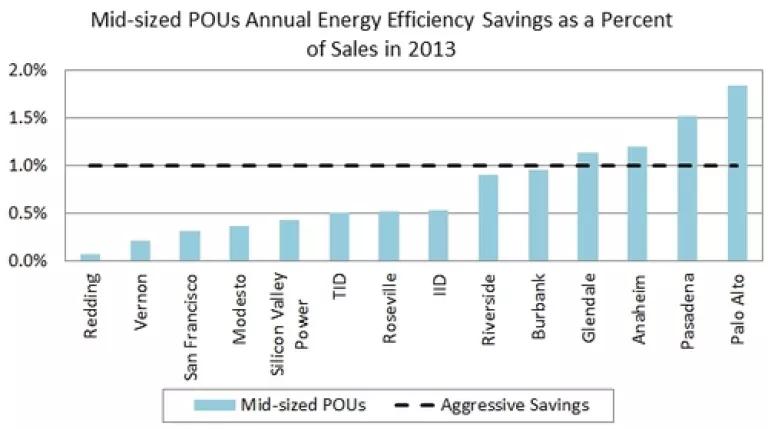
This post reflects extensive contributions by Lisa Xue, a Sustainable Energy Fellow at the Natural Resources Defense Council, working on energy efficiency issues in California. She received her M.A. in International Policy from Stanford University and B.A. in Economics and B.A. in Development Studies from the University of California, Berkeley.
Saving energy in your home not only saves you money on your utility bill, but it’s good for the overall electric system (it brings down the overall cost of energy and ensures the lights will stay on). That’s why California’s energy utilities provide financial rebates for you to invest in energy saving technologies, like more efficient electronics or better windows in your home.
Every year, the California publicly owned utilities – which provide electricity for about a quarter of Californians – report to the state’s energy commission how much energy all these programs are saving. The results for 2013? According to a new NRDC analysis, the publicly-owned utilities reached an all-time high: they collectively saved over 1% of the total amount of electricity that they sold in 2013.
Now, 1% savings might not sound like a lot on its own, but think of it this way: It’s like getting three days of electricity each year using no power plants, just from the joint efforts in 2013 from publicly owned utilities and customers like you. It’s also a lot of energy to be saving for any utility around the country. Saving 1% would put California’s publicly owned utilities up near the top of the best players in efficiency as shown in the 2013 national rankings for energy efficiency.
Plus, these energy savings add up over time. Take a look at California as a whole: energy efficiency (the technical name for these energy savings) powers about a fifth of California’s economy. That’s over two months of California’s economy powered purely on clean and cheap energy efficiency.
But not all publicly owned utilities are performing equally. In fact when you separate the different types of utilities based on their size, you see a much more nuanced picture: the large utilities saved more energy than ever as a percent of sales. But the middle-sized and small utilities are actually much lower than their peak in 2010, and have plateaued since.

On national rankings, the large utilities would give even the strongest performers a run for their money; while the middle-sized utilities would be just about average; and the small utilities would be noticeably below average.
And that’s not the whole story either. When you separate the individual utilities from their respective groups, you see even more differentiation. Take the middle-sized group for example: a utility like the City of Palo Alto is saving so much energy it would compete with some of the most aggressive states like Massachusetts. Whereas a utility like the City of Redding is performing at a level lower than Alabama.

There are a number of ways that those publicly owned utilities can ramp up their energy, which are detailed in our letter here. For example, they can adopt innovative policies that spur energy savings (like removing the disincentive for selling less energy and forming partnerships with other utilities). They can also invest more money in these energy saving programs (all the utilities that are low are savings are also not spending much money on energy efficiency) instead of investing in the dirty and more costly conventional power.
With that said, 2013 was a high point for public power’s energy saving programs in California. In particular, Los Angeles Department of Water and Power made an enormous turnaround and it shows in all the metrics. Palo Alto, Pasadena, Anaheim, Glendale, Truckee-Donner, Azusa, and Healdsburg all saved significant amounts of energy and exceeded their goals for 2013. We congratulate them here.
Now that you know that saving energy is good for both you and the electric system, go ahead and ask your local utility how they can help you save energy.

